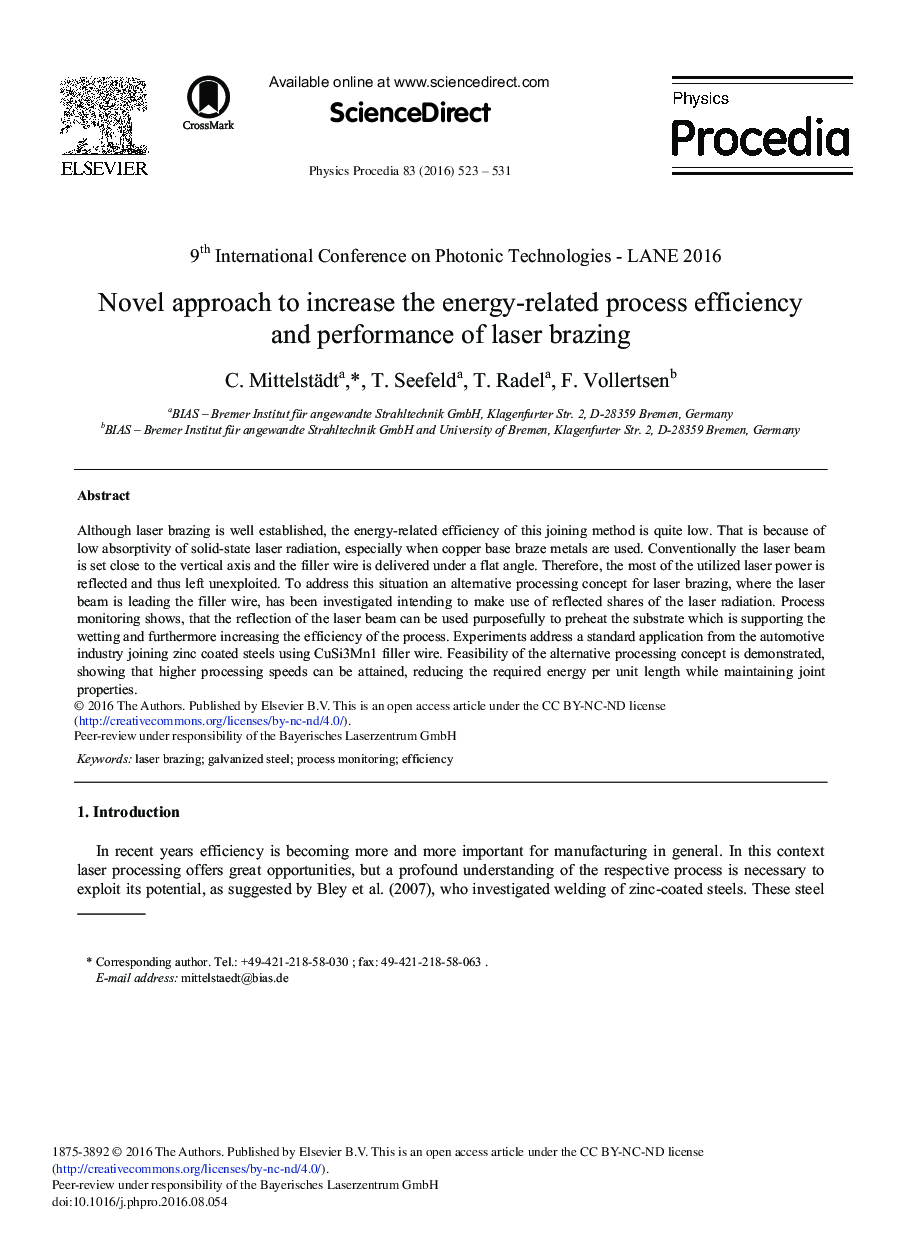| Article ID | Journal | Published Year | Pages | File Type |
|---|---|---|---|---|
| 5497385 | Physics Procedia | 2016 | 9 Pages |
Abstract
Although laser brazing is well established, the energy-related efficiency of this joining method is quite low. That is because of low absorptivity of solid-state laser radiation, especially when copper base braze metals are used. Conventionally the laser beam is set close to the vertical axis and the filler wire is delivered under a flat angle. Therefore, the most of the utilized laser power is reflected and thus left unexploited. To address this situation an alternative processing concept for laser brazing, where the laser beam is leading the filler wire, has been investigated intending to make use of reflected shares of the laser radiation. Process monitoring shows, that the reflection of the laser beam can be used purposefully to preheat the substrate which is supporting the wetting and furthermore increasing the efficiency of the process. Experiments address a standard application from the automotive industry joining zinc coated steels using CuSi3Mn1 filler wire. Feasibility of the alternative processing concept is demonstrated, showing that higher processing speeds can be attained, reducing the required energy per unit length while maintaining joint properties.
Related Topics
Physical Sciences and Engineering
Physics and Astronomy
Physics and Astronomy (General)
Authors
C. Mittelstädt, T. Seefeld, T. Radel, F. Vollertsen,
